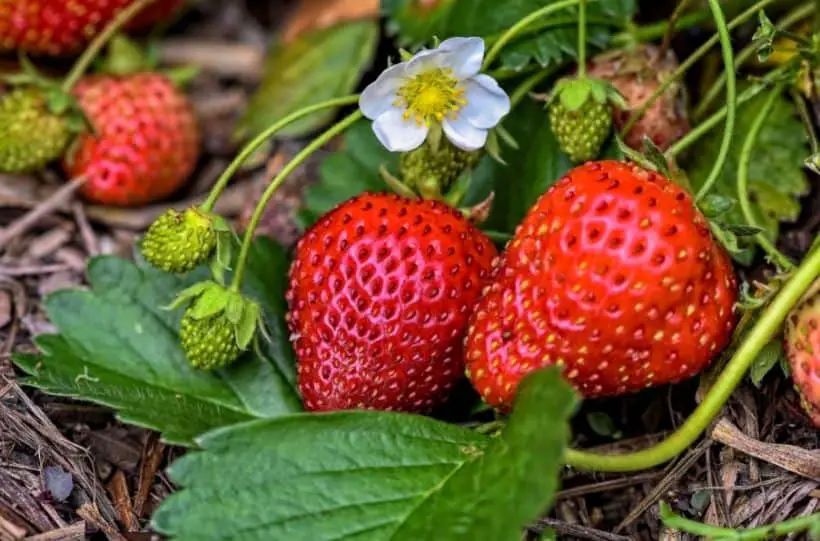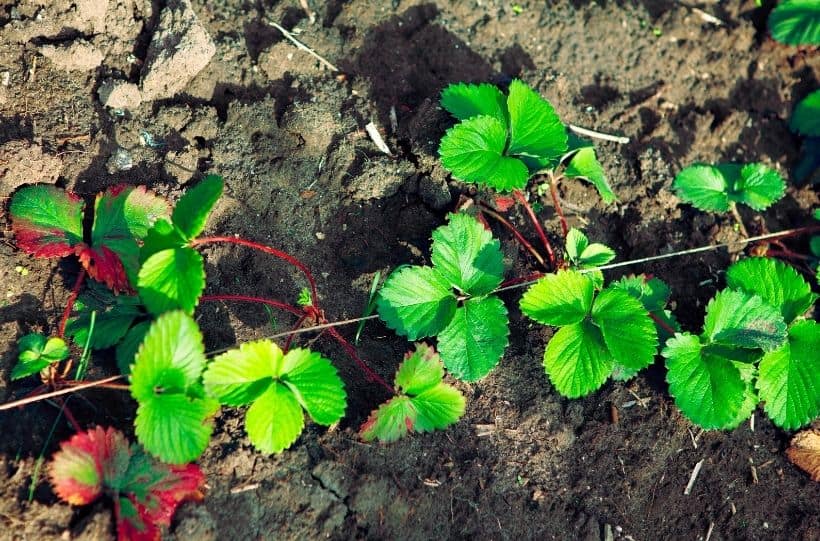How To Plant and Grow Strawberries From Seeds
If you are a gardener, chances are you have considered growing strawberries. They are extremely versatile, able to grow almost anywhere from containers to raised beds, hanging baskets to garden borders.
They are one of the easiest fruits to grow, not to mention incredibly delicious too!

This post contains affiliate links that earn me a commission at no additional cost to you.
But here’s the deal, it’s one thing saying strawberries are easy to grow, compared with actually growing them.
So to make it easier for you, we have put together these quick and easy steps so you know how to plant and grow strawberries from seeds at home.
Take a look at the following top tips and step-by-step instructions to grow your very own strawberries with confidence. Once you’ve planted your strawberries, remember to also check out our post on picking strawberries for a successful harvest.
Top Tips to Grow Strawberries from Seeds
Before you get ahead with your compost and shovel, check out these top tips to help you grow your strawberries. These tips offer important considerations that could impact the success of your strawberry plants.

Variety
There are many different varieties of strawberry plants with each having a slightly different growing season. Strawberries tend to be ready for harvest in the summer months, but some varieties such as the Honeoye strawberries are ready early on in summer, and others e.g. Rhapsody ripen later on.
Once you know which variety of strawberries you have, you can then plant them in time for their optimum growing season.
One more consideration is how long you want access to fresh strawberries during the growing season. Strawberries come in two categories:
- Summer-fruiting: have a short fruiting season in which the plants provide a lot of strawberries in a short burst of 2-3 weeks.
- Perpetual or ever-bearers: strawberry plants that provide fruit throughout the whole season.
If you are someone who likes to make lots of jam, tarts, and smoothies, then summer-fruiting varieties may be best for you. These plants provide a large number of strawberries in a short space of time.
If however, you like the occasional strawberry as a summer-time snack, then the perpetual strawberry varieties are the ones to choose.
Second Season
Some varieties of strawberries have what is known as a second growing season. This is where earlier on in the summer they will have produced fruit. Your strawberry plants can then be prepared for a second growing season ready for September.
Varieties such as Vibrant strawberries will often produce fruit in September as well as the summer months. Simply cut back any runners to redirect your plant’s, energy into producing new flowers. Encourage pollinators into your garden so that they will help to fertilize your strawberry plants.
Soil
Though strawberry plants are extremely versatile, any help you can provide them will see your strawberry plants off to a good start.
Strawberry plants grow best in well-drained and fertile soil. Ensure to turn your soil first and mix nutrient-rich compost to help improve drainage and increase the nutrients available to your seedlings.
Location
Strawberry plants like it best when placed in a sunny spot that is easily accessible to pollinators. Pollinators will help fertilize your strawberry plants so they bear more fruit.
It is also important that you grow your strawberries in an area protected from the wind. The wind could cause damage to your strawberry plants plus it makes it difficult for pollinators to access your plants if positioned in a windy area.
Space
Your strawberry plants will develop long roots so need to be planted with enough space so they aren’t competing for nutrients within the soil. It is recommended to plant strawberry plants around 14in apart.
Above the ground, your strawberries need space to grow upwards and outwards. Be sure to take this into account when choosing an area for planting strawberries. If planting directly into the ground, it is best to plant them in rows that are 30inches apart.
If planting your strawberries into a pot, ensure the pot is deep and limit adding 1-3 seedlings per pot.
You could even consider growing your strawberries in a planter like this!
How To Plant and Grow Strawberries From Seeds
Once you have decided on a location and variety of strawberries, it is time to grow your strawberries from seeds.
As seeds are quite vulnerable to temperature changes, it is best to grow your strawberry seeds indoors.
At the beginning of the growing season in March, or early April, add compost to a potting tray. Carefully press the seeds into the soil and spray the soil with water to moisten but not soak.
Place your potting tray in an area that has access to sunlight but does not have any drafts. Continue to spray the soil so that it stays moist. After 4-6 weeks, your seeds will start to germinate.
By this time, the weather outside should be warmer and with less drastic changes e.g. strong winds and rain. So it is time to transfer for seedlings outside.
This is when you would choose where to plant your strawberries e.g. in a pot or directly into the ground.
Use your fork to turn the soil and add compost so that it has enough nutrients for your strawberry plants.
Carefully transfer your seedlings ensuring to leave enough space in between each seedling so there is room for growth above and underneath the soil.

Strawberries love being planted in full sunlight, however, this does mean that the soil can dry out faster. Ensure to keep the soil moist by watering at least once a day.
Now your seedlings are off to a great start and will take a couple of months to start producing strawberries.
During this time, pull out any weeds that begin to grow around your strawberries. Weeds will compete for space and nutrients so need to be removed asap.
Also try to manage any pests such as vine weevils, and damage such as grey mold. If you see damaged sections of your plant, remove these so they do not spread to your healthy plants.
As your strawberry plants begin to grow, they may start producing long side stems called runners. These need to be removed to encourage your plants to focus their energy on producing more flowers. The runners can be removed and planted themselves to generate a new strawberry plant.
Finally, once your flowers have been fertilized and begin to turn to strawberries, cover your plants with netting. This prevents animals such as birds and squirrels from eating strawberries as they ripen.
Tips for Harvesting Strawberries
Most strawberry plants tend to have a 3-4 week window where they produce fruit for you to harvest. So after you find one red strawberry it’s best to continue checking every 2-3 days.
And to prevent damaging your ripe strawberries, carefully cut them with a couple of cm of the stem attached.

By following these step-by-step instructions and incorporating the top tips from earlier in this post, you will be well on your way to a successful strawberry harvest.
Growing strawberries from seeds require minimal maintenance or experience. But with a little bit of effort, care, and time, you will witness those tiny seeds grow into a full strawberry plant.
And make sure to check out some of our other gardening guides including:


